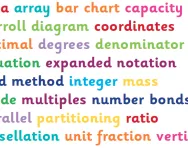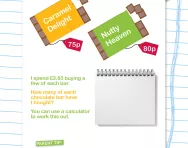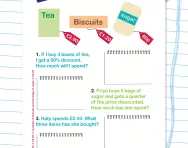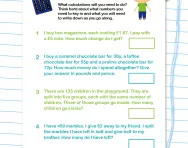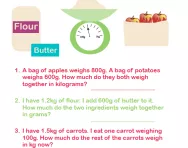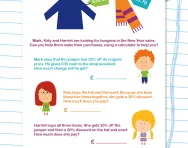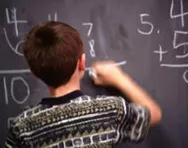What is a calculator used for in primary school maths?
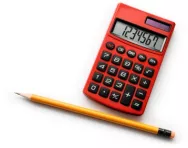
What is a calculator used for in primary school maths?
Until the implementation of the 2014 curriculum, children started to use calculators in Year 4. Since then, calculators have not been used in primary schools, and they are no longer allowed to be used in the SATs, but read on for ideas to help you show your child how calculators can help us with calculations and problem-solving.
The idea of introducing a calculator for word problems is that a child's ability to comprehend a problem is tested, rather than their calculation skills.
Not all primary maths questions can be answered with the use of a calculator, and it is up to the children to work out how and when a calculator will help them. Children also need to know when NOT to use a calculator.
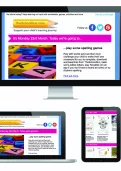
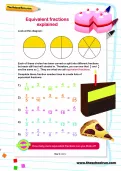
Boost your child's maths & English skills!
- Follow a weekly programme
- Maths & English resources
- Keeps your child's learning on track
For example, read the following problem:
I leave the house at 9.20am. My journey into work takes 55 minutes. What time do I arrive at work?
In this case a child might key 9.20 + 0.55 into the calculator, which would give 9.75... which is clearly the wrong answer!
Calculators in KS2 SATs maths papers
Until May 2013, when children sat the Key Stage 2 SATs they were asked to complete one paper with a calculator and one paper without. As part of ongoing SATs reforms calculator use has now been banned during the exams.
Examples of KS2 calculator problems
Solving two-step problems
Children could use a calculator in Year 4 when they are doing a two-step problem, such as the following:
There are 4830 people in a stadium. Half support Aston Villa and half support Manchester United. Of the Manchester United supporters, 1720 people are wearing hats. How many people are not wearing hats?
- For this problem, children would need to understand that the first thing they would need to key in to the calculator would be: 4830 ÷ 2 = for which they would get the answer 2415.
- They would then need to key in: 2145 - 1720 = for which they would get the answer 425.
Solving money problems
In Year 4, children need to get used to calculating with amounts of money. If using a calculator, they need to know that when a decimal number has a zero on the end, this zero is automatically knocked off, so if you have to work out the following:
What is the cost of 4 magazines at £3.40 each?
- You would enter: 4 x 3.40 which would give you the answer 13.6.
- Children need to get used to the idea that because the zero has been knocked off, the answer they need to write down is £13.60 and not £13.06 or £13.6p.
- Equally they would need to remember that they must either deal in pounds or pence when calculating with a calculator and not mix the two within a calculation.
Year 6 calculator problems
An example Year 6 problem might be:
John does a sponsored walk. His uncle says he will give him 80p for every mile he walks. After the walk, John receives £4.80 from his uncle. How many miles did he walk?
- Children would need to realise that they either need to convert the pence to pounds (80 to 0.8) to work this out: 4.8 ÷ 0.8 = 6
- Alternatively they could convert the pounds to pence (4.8 to 480): 480 ÷ 80 = 6
Sometimes a question will test a child's ability to understand how to key something into the calculator. Here is an example of a question a child might get in Year 6:
Which of the following is gives an answer greater than 450?
- 829 - 518
- 290 + 193
- 16 x 28 1/2
Here, to work out the last calculation quickly, the child would need to know that 28 1/2 needs to be keyed into the calculator as 28.5. They might be able to work 16 x 28 1/2 using a written method, but it would take much longer.

Give your child a headstart
- FREE articles & expert information
- FREE resources & activities
- FREE homework help
